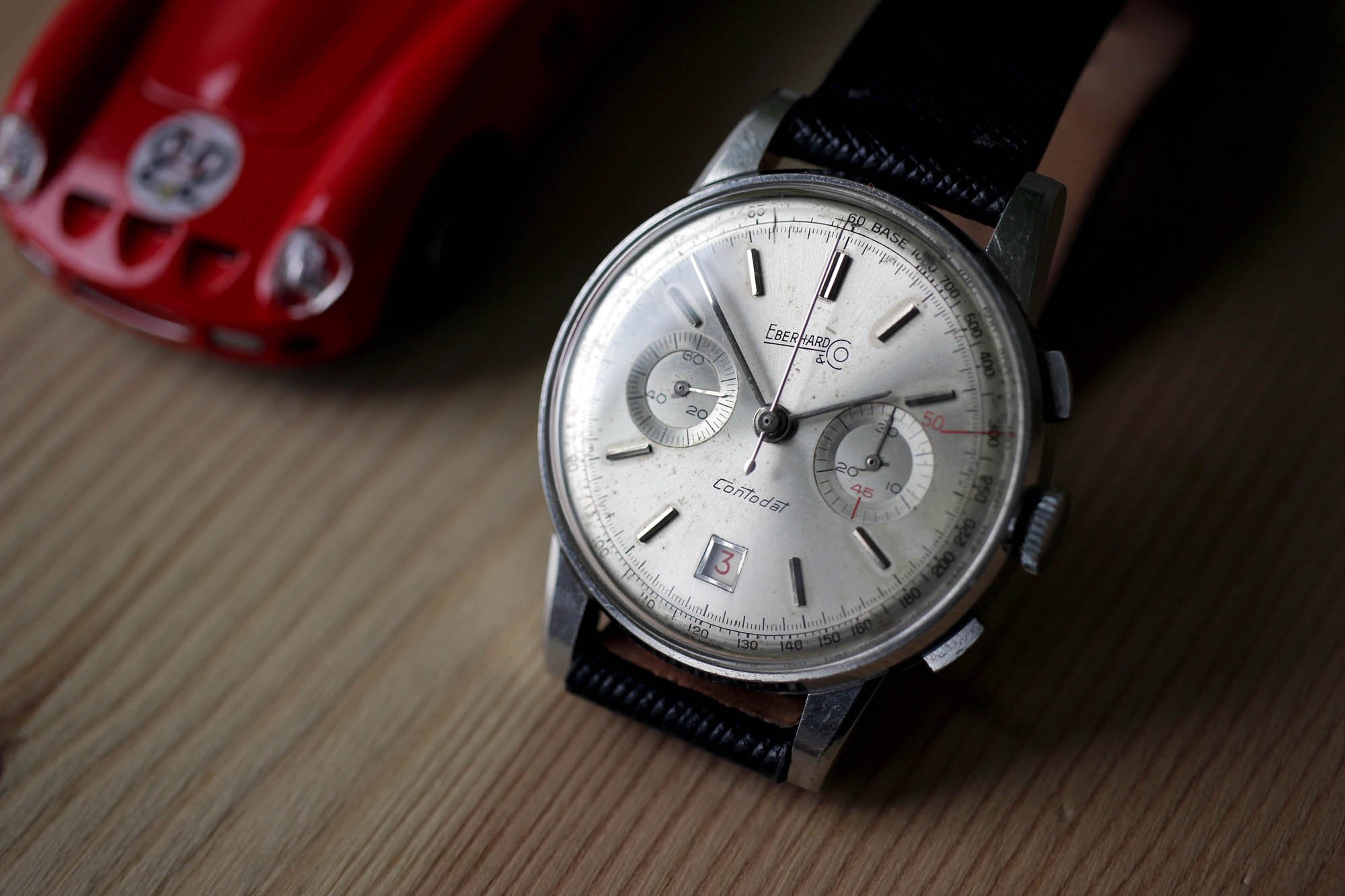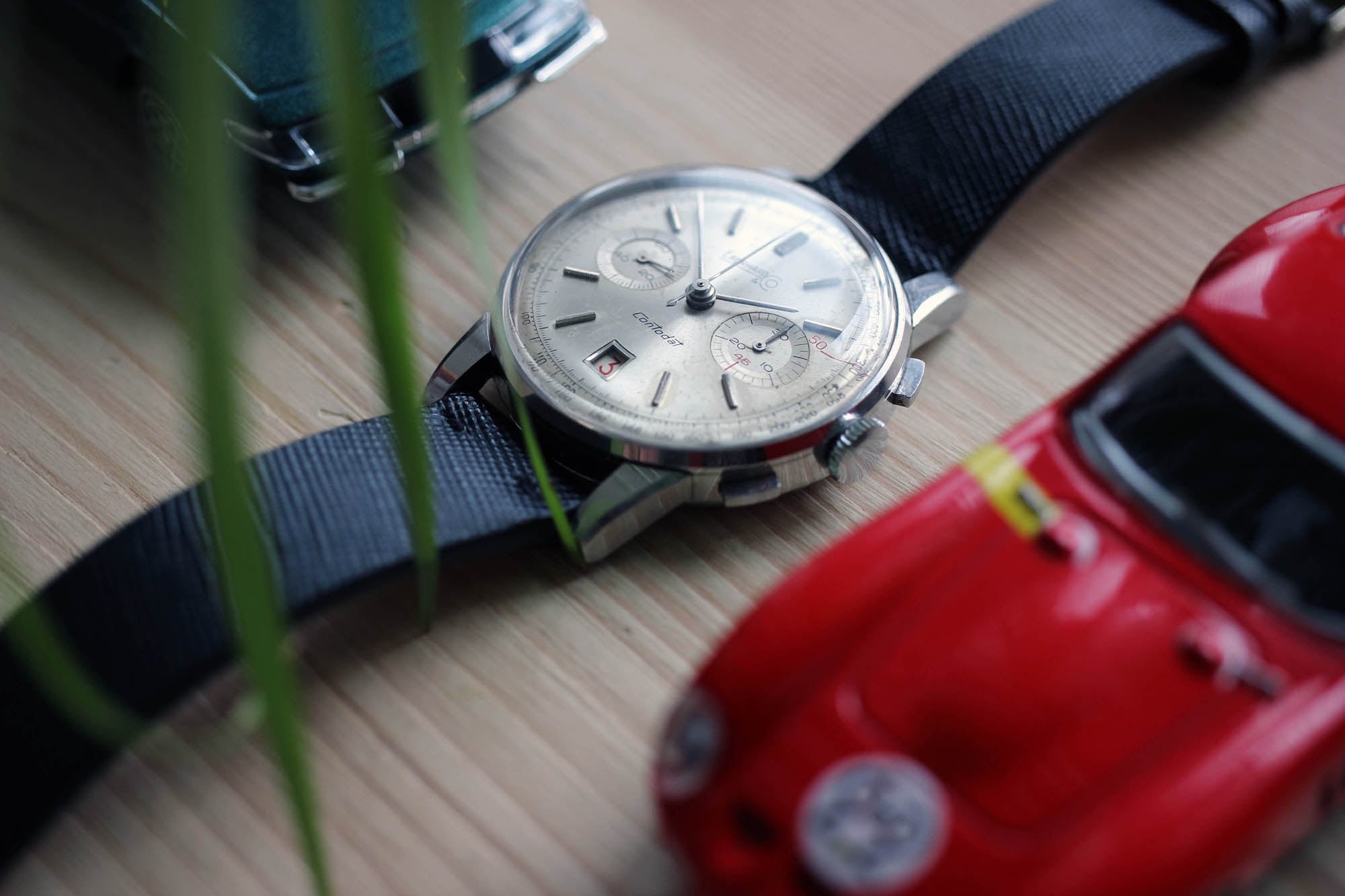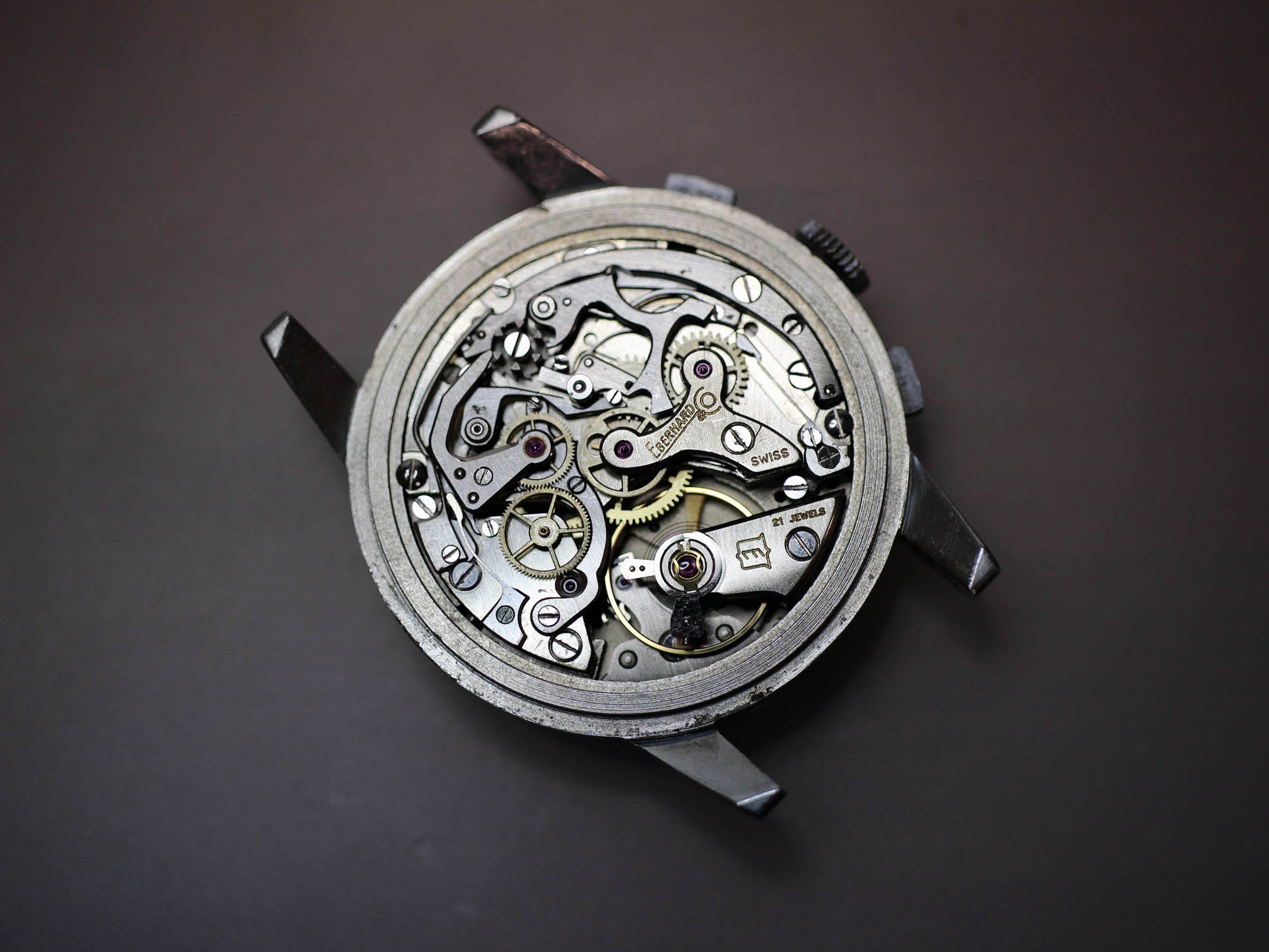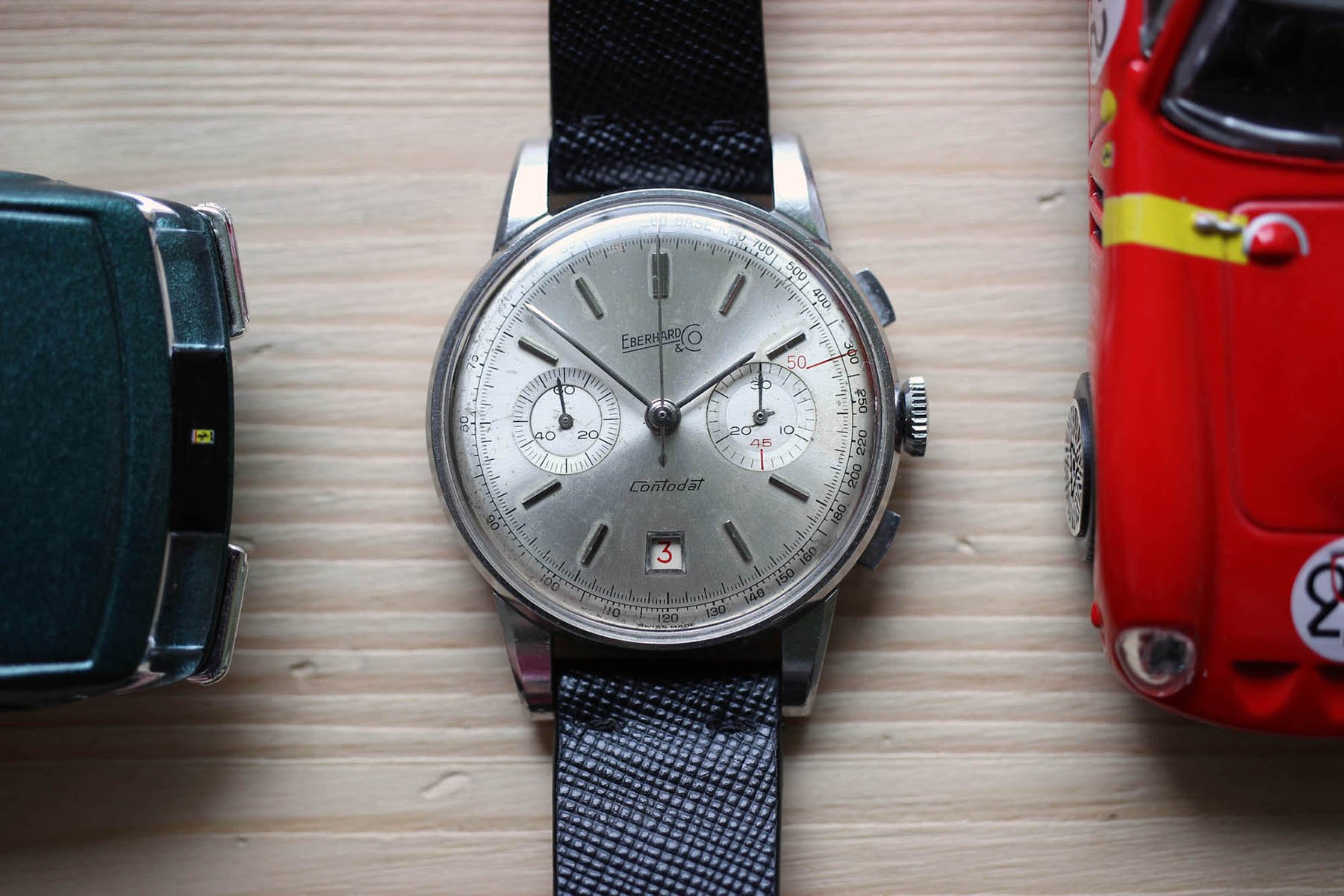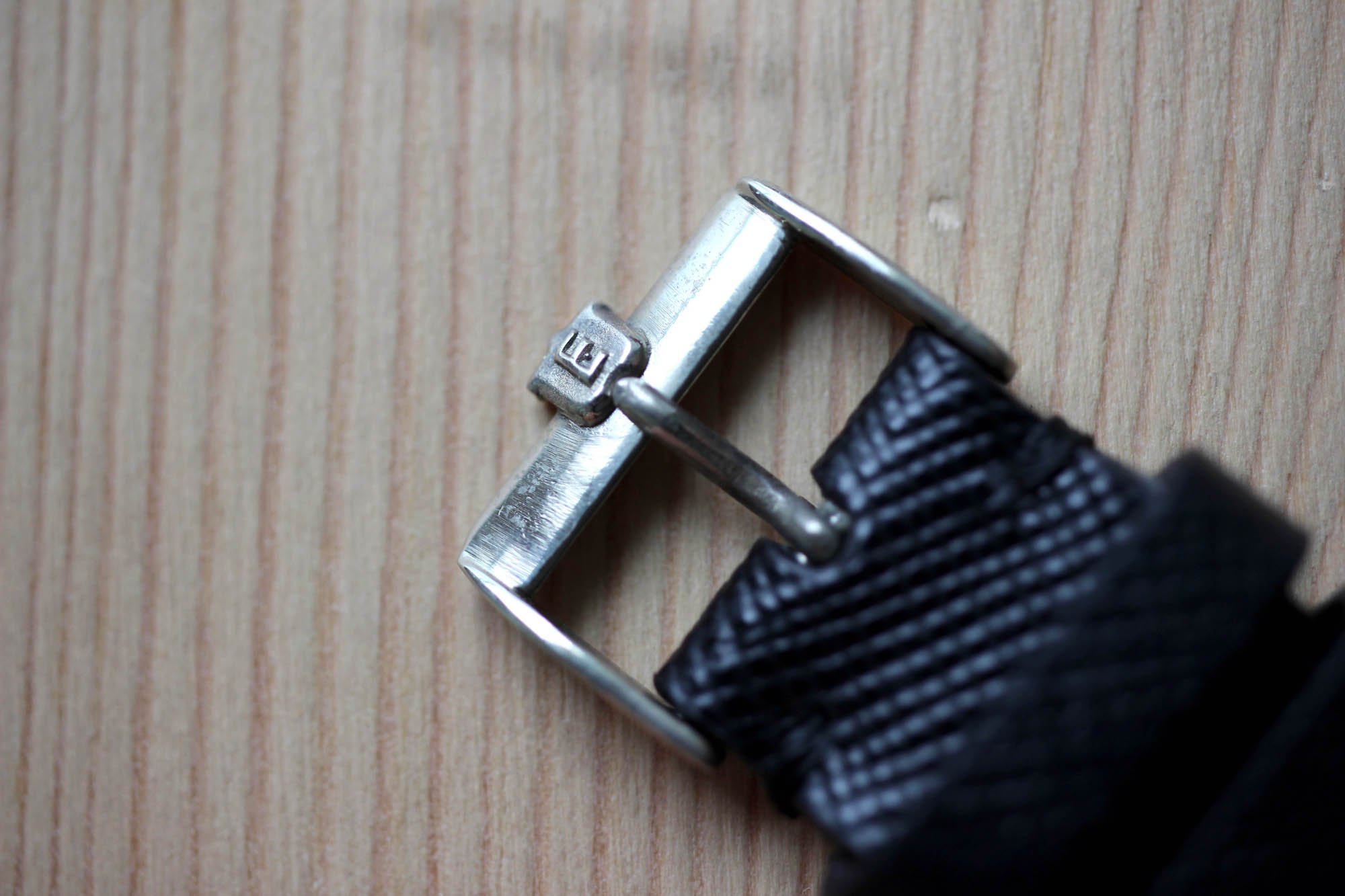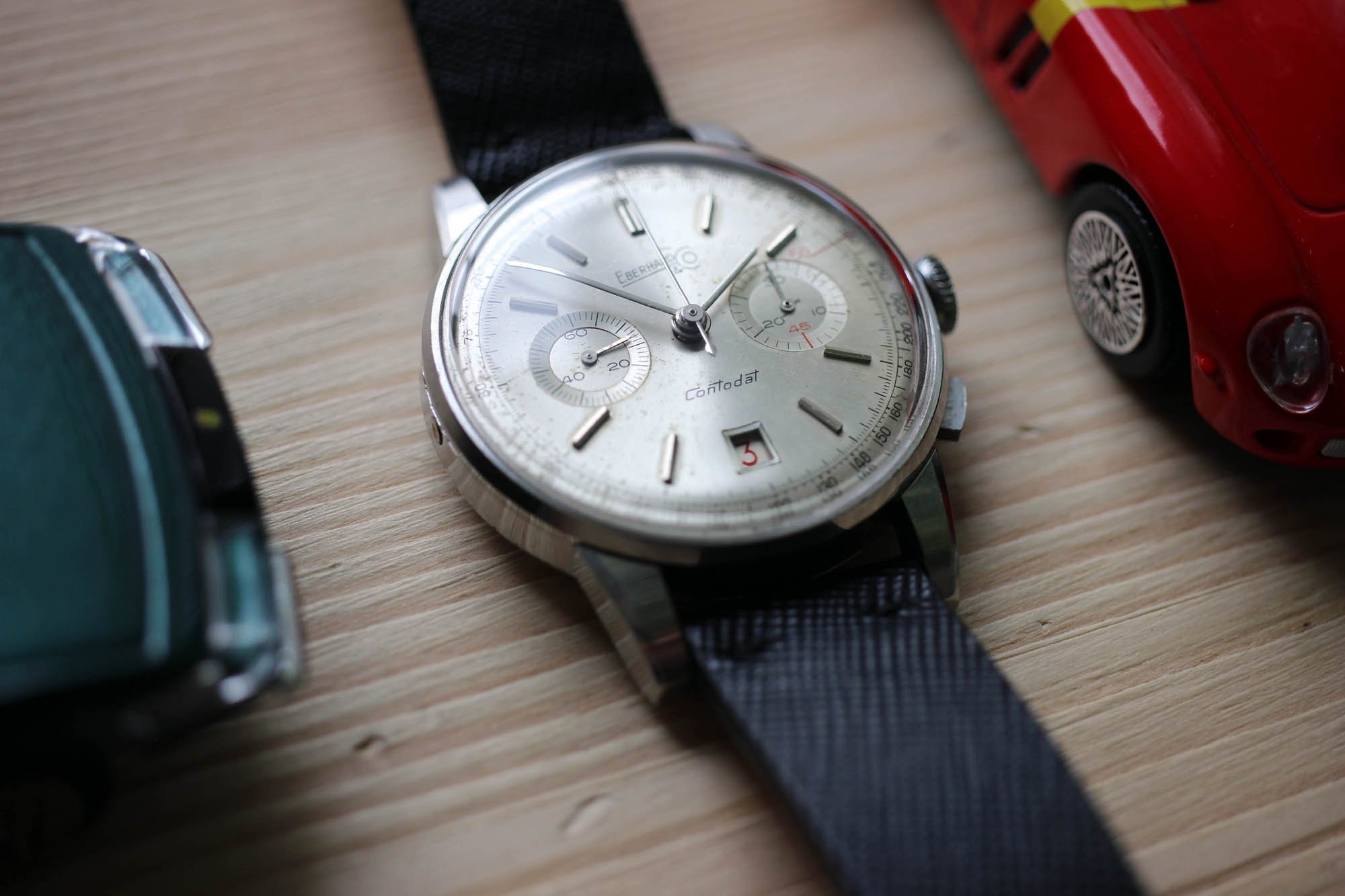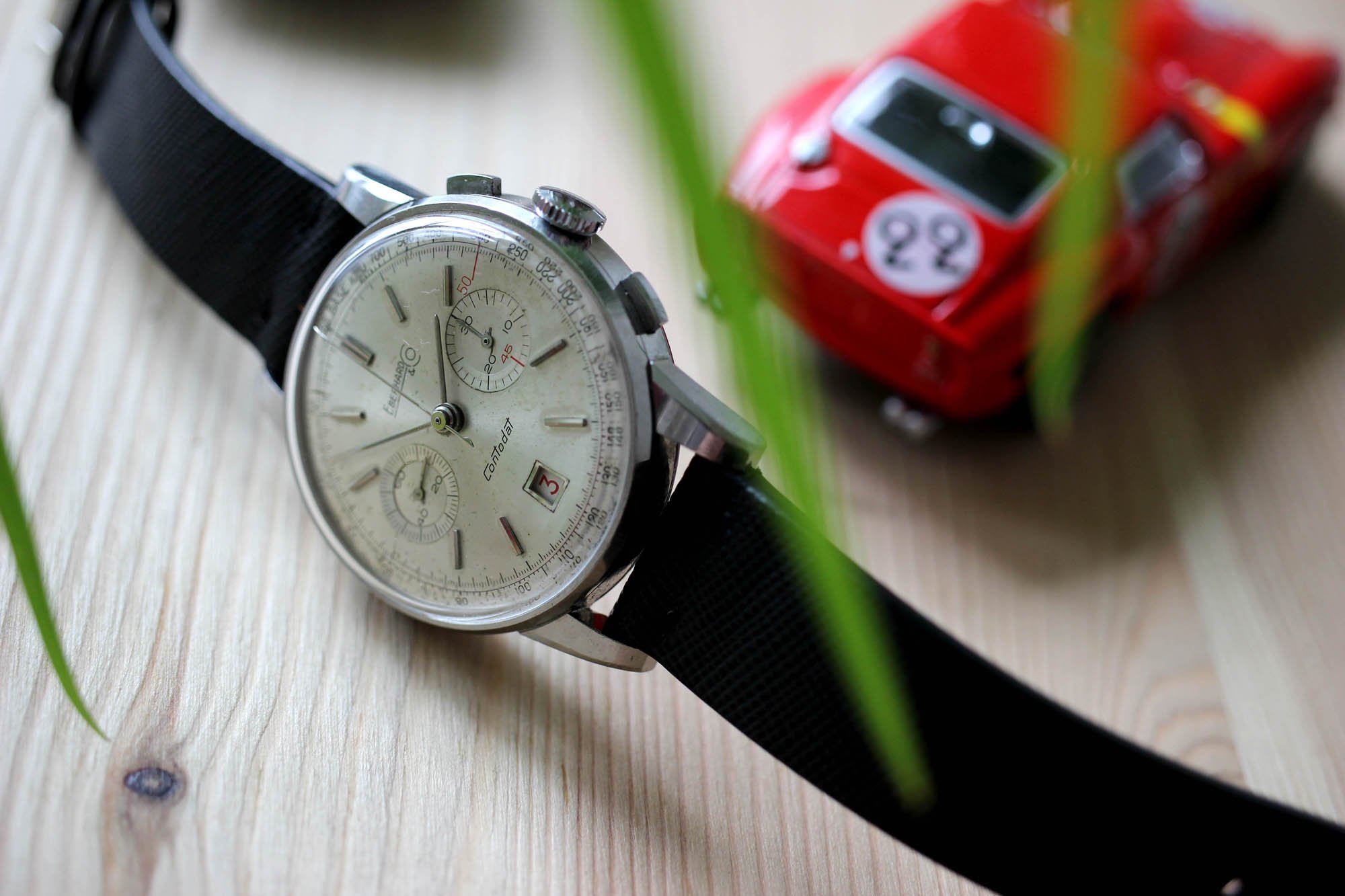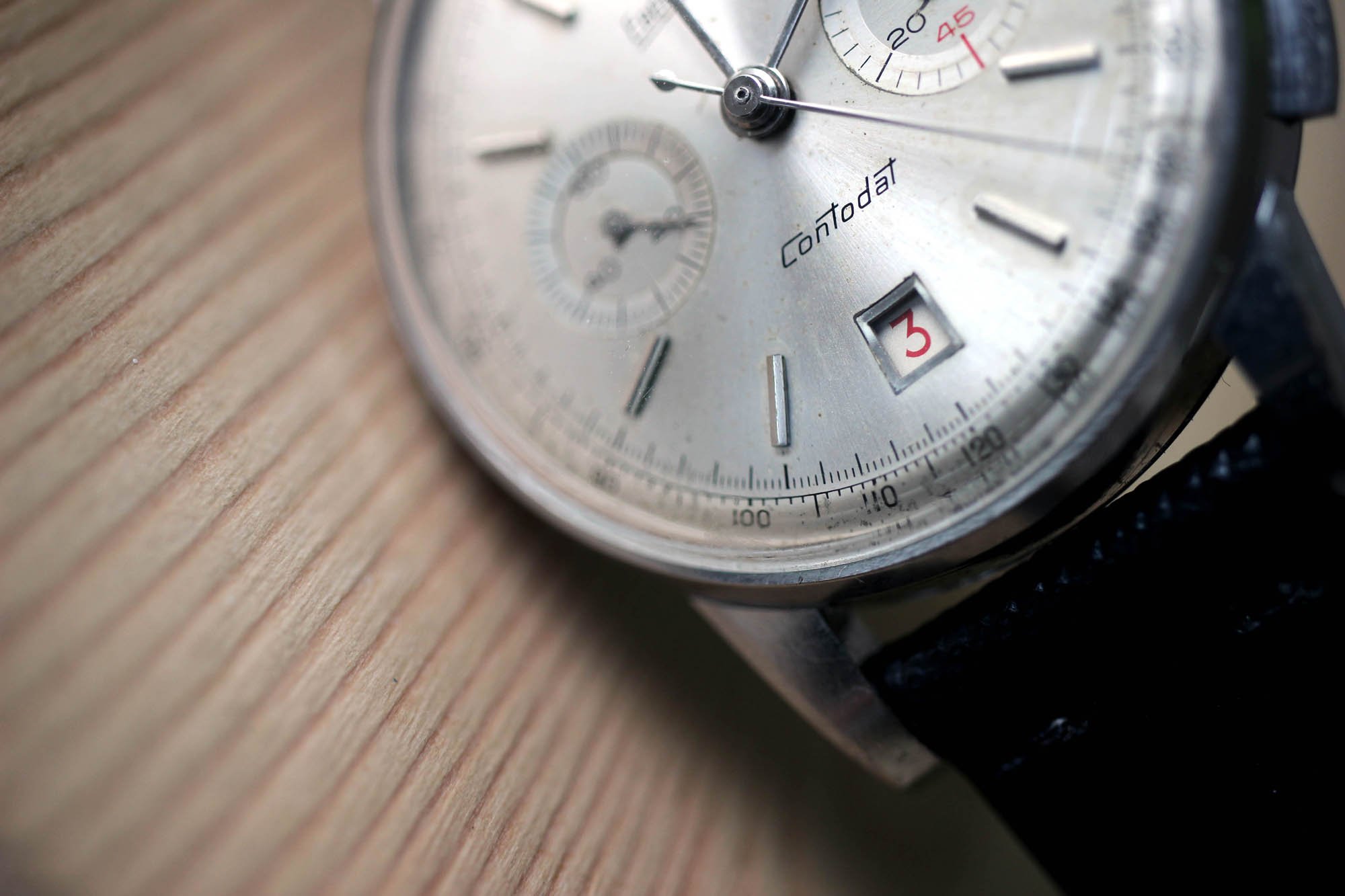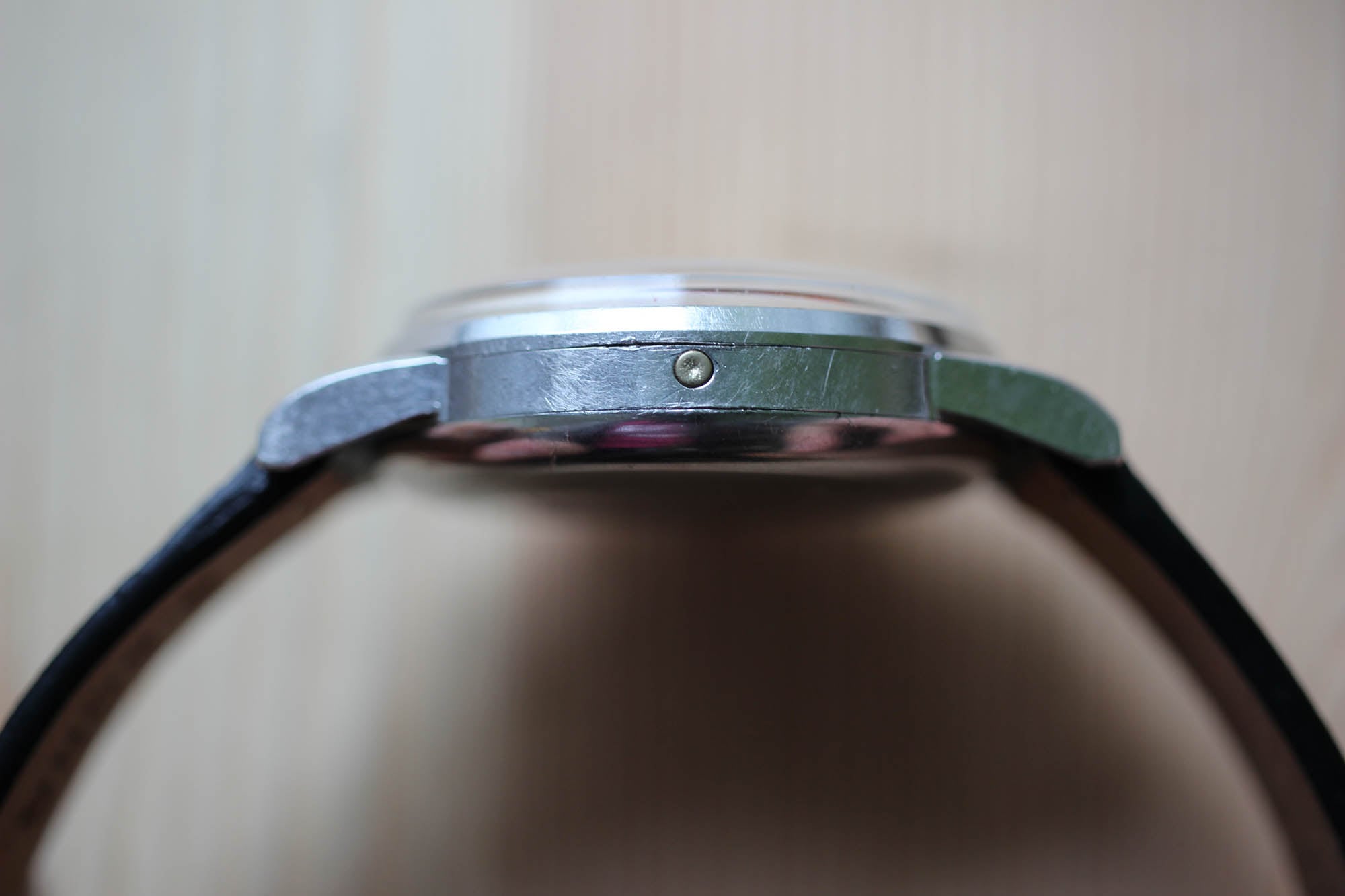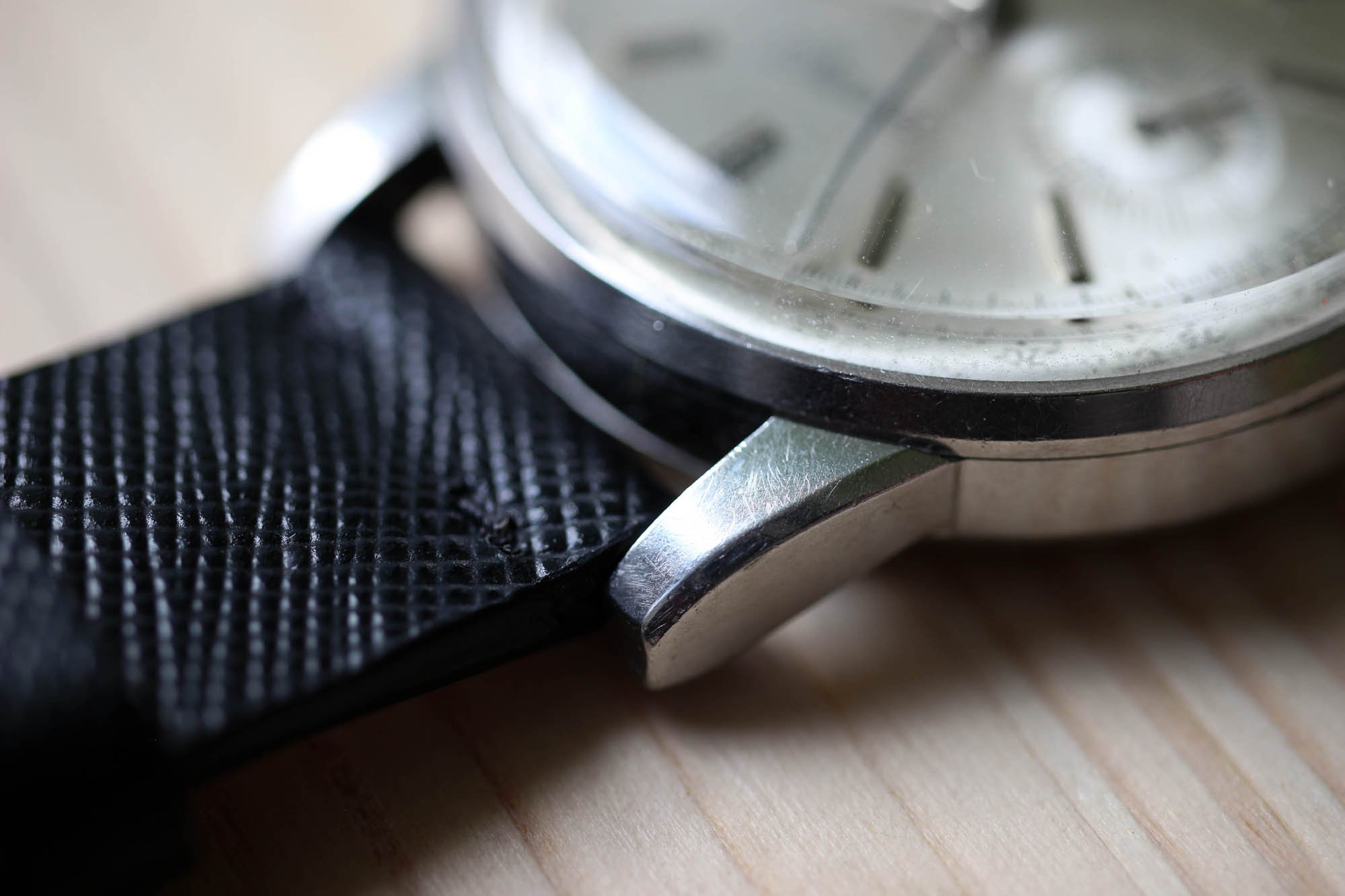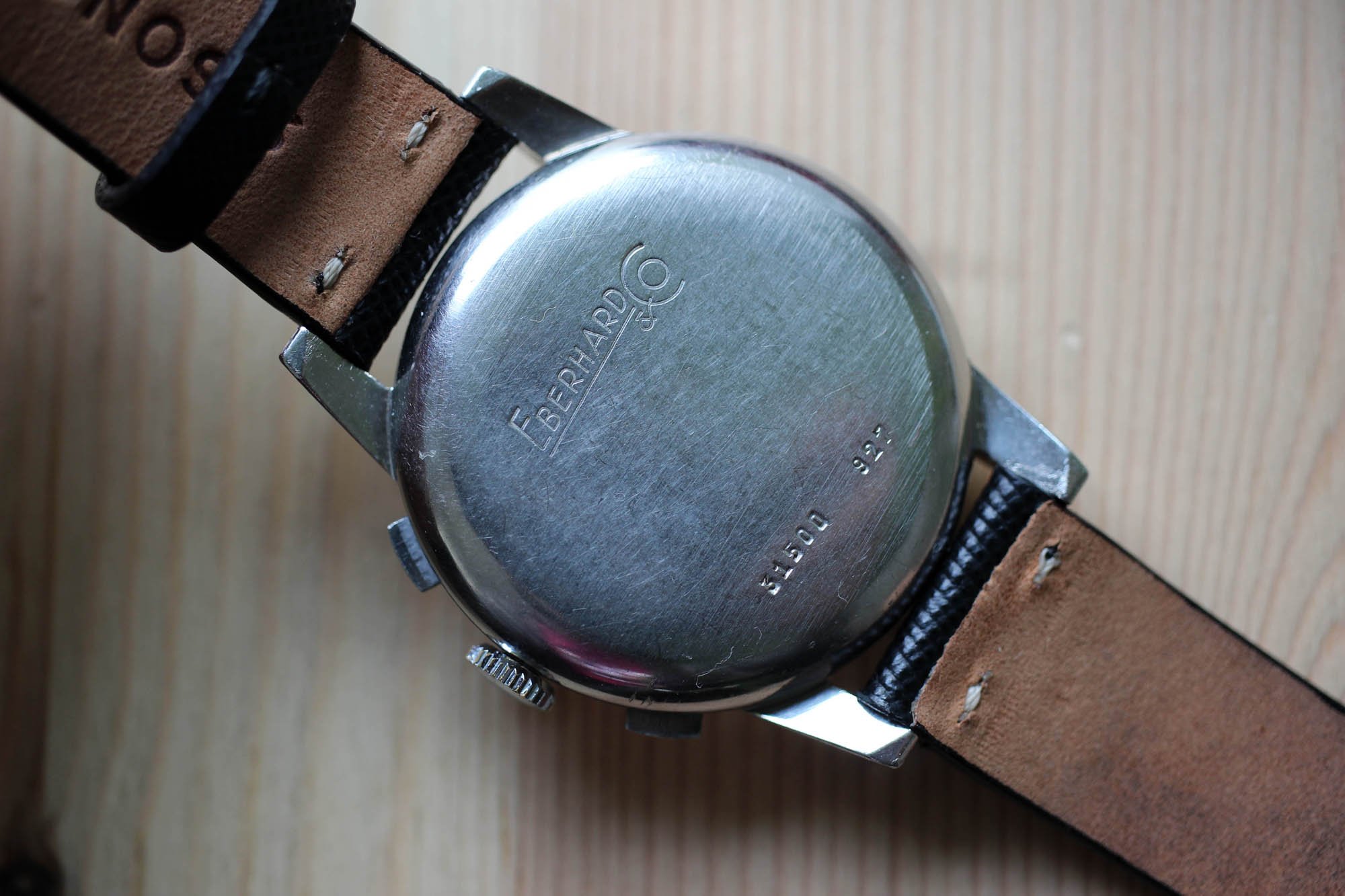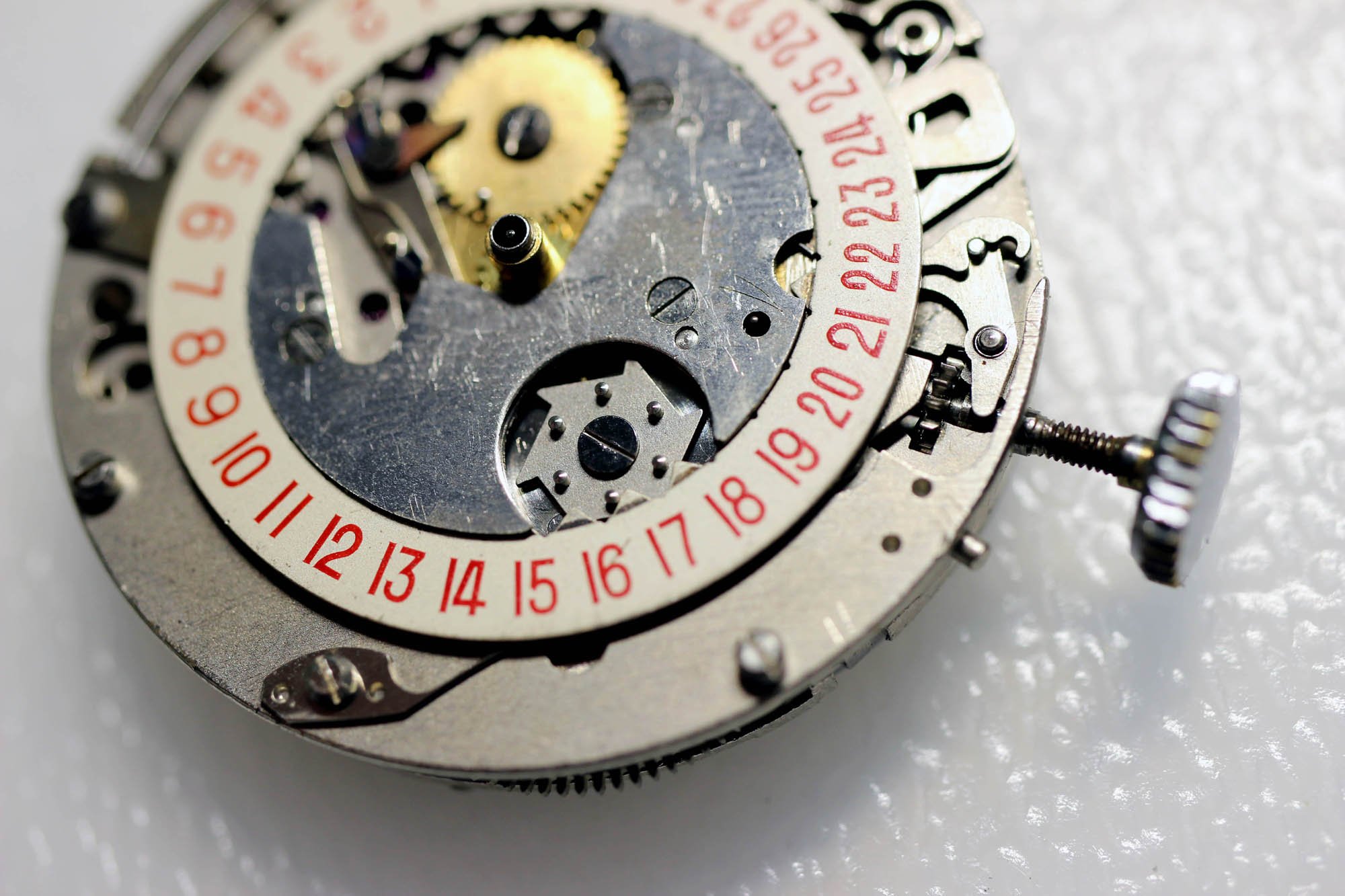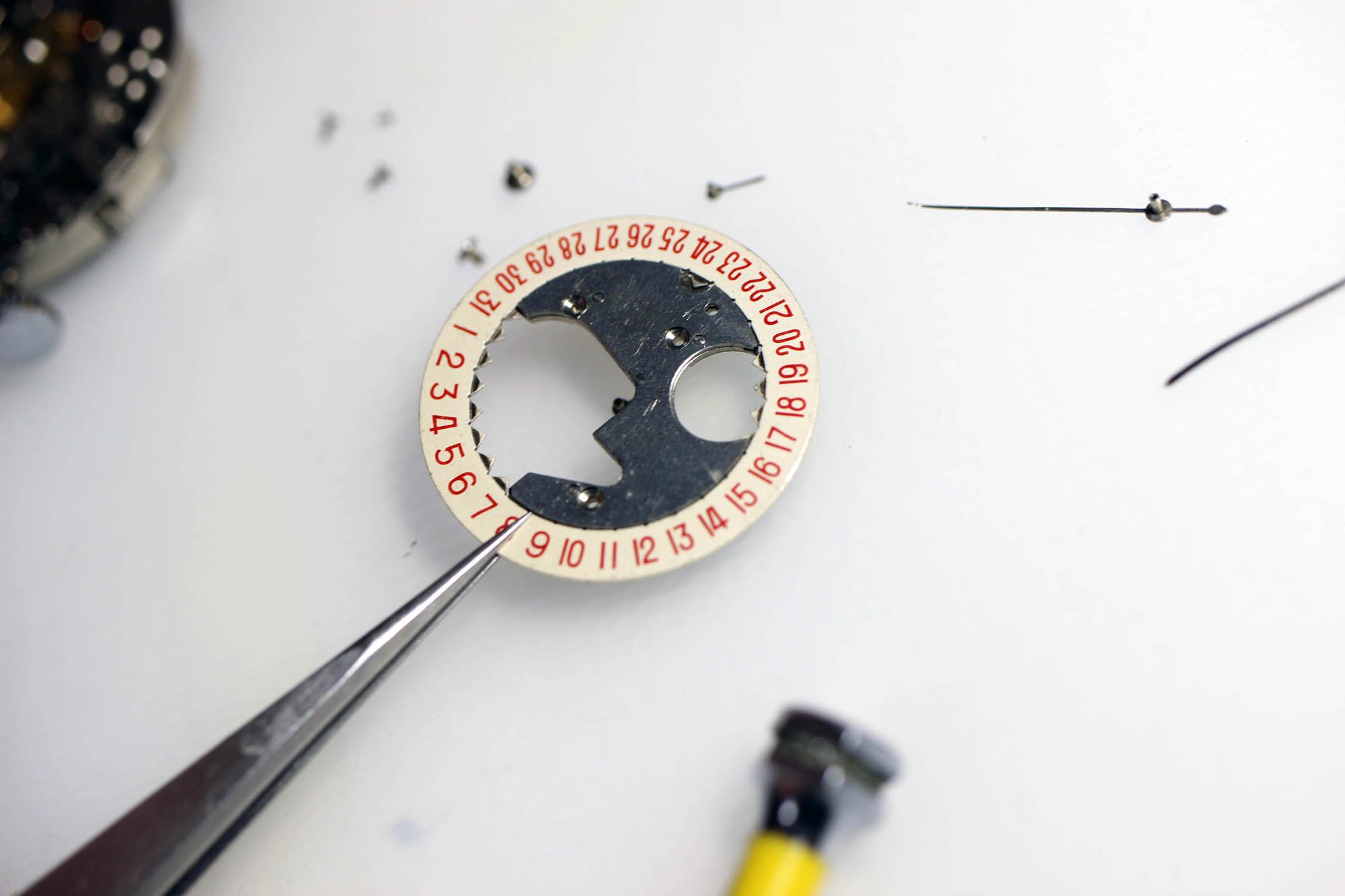#TBT Meet Date Pioneer Chronograph Eberhard Contodat
Saving the Eberhard Contodat, the first chronograph with a single disc date display gave me a big headache.
The golden rule of watch collecting has been repeated numerous times on Fratello Magazine pages. Condition, condition, condition. Did your eye-brow pop in disbelief after you looked at the Eberhard Contodat pictures? Well, let me reveal a caveat to the golden rule. Sometimes, rarity wins out.
And I don’t mean unpolished-Rolex-Submariner-rare… I’m talking about models produced in way lower production volumes that come up for sale once a year or even less often. The exception to the golden rule also follows, that if a better example of the same model surfaces (and I highlight the IF here), you take it as well and let the first catch go. It should be easy to pass it on for what you paid for it.
Bad news first
What is an acceptable condition might be a matter of dispute that I don’t want to get into. The silver sunburst dial has developed a gentle “freckling”, but at least these freckles are consistent and equally distributed. It is not too bad. To me, they look more like an acceptable patina than a defect. Besides one or two spots on the tachymeter track, the printing on this Eberhard Contodat seems untouched.
The only detail that bothers me is an ugly scar on the minute sub-register. Clearly the work of some blind butcher trying to put the hand back in the right place. He left some scuffing around center pinion with his tweezers.
It’s hard to believe the case hasn’t been touched and all the edges are still beautifully sharp. If you thought a polisher’s best friends are Rolex lugs, start looking at examples of the Eberhard Contodat and we can come back to the topic again in three years.
The real problems
I’ll save you the time and get to the real problems now. From what I found, the date disc should display two colors. It should be red on the even dates and the black on the odd ones. My example has all dates red, but the date ring is definitely an Eberhard production.
By the way, from all the vintage watches I own, the date number typo on the Eberhard Contodat is by far the most beautiful. Without a dispute. It seems like it was designed yesterday by Erik Spiekermann type of typo-caliber. To finish the sad part, the central second hand is a replacement from earlier Contodat models and the crown is definitely aftermarket. An easy spot as it is missing the majestic “Sloping E” signature.
Eberhard on radar
So, why so much enthusiasm about a watch with so many imperfections? Eberhard is not really the most popular brand among collectors. This may have something to do with limited knowledge about the brand. It’s worth knowing, that seasoned collectors rank some Eberhard movements among Switzerland’s finest.
…they don’t hang around for long.
Furthermore, there aren’t many Contodat watches on the market. Whenever honest original pieces re-surface, they often carry a significant price tag. Additionally, they don’t hang around for long. If you want one, you’ve got to be fast. In their book Chronographs for collectors, Joël Pynson and Sébastien Chaulmontet feature the Eberhard Contodat too. They say, that the Contodat movement “was characterized by a quite exceptional level of finish and quality if you compare it with calibers fitted into chronographs of the time made by specialist companies such as Breitling, Excelsior Park, Angelus, Universal, and Heuer.”
Valuable firsts
Let’s take a stroll down memory lane on three important date chronographs. Balazs wrote quite a lot of interesting articles on the Angelus Chronodato that was introduced in 1942 as the world’s first chronograph with a full calendar (day-date and month). Six years later, in 1948, the world’s first series chronograph featuring a digital date display came to light. Again branded Angelus, the Chrono-Datoluxe with a 252 caliber had a window with two concentric discs. Now we get to Eberhard. Eberhard introduced the Contodat as the first chronograph with a single disc date display in 1957.
Eberhard Contodat movements
There is a lot of conflicting information available online. After many hours of research, my understanding is that the early Contodat came fitted with a non-traditional caliber 14001 with a start-stop-reset upper pusher and a slider instead of a bottom pusher. By moving the slider upwards, you stopped the chronograph and prevented an involuntary reset.
It’s important to highlight that all the movement parts were beveled, which was a sign of fine workmanship. Later versions seen in catalogs from 1962 are fitted with the 310-82 caliber, stripped of the sliding function and equipped with two classic pushers and functionality as you know it.
A lot of styles
The Eberhard Contodat came in at least three different lug styles of different size and edging. Changes were done to the dial too. The beautiful relief “E” placed above the printed logo disappeared in later versions. The early dauphine hands were replaced by stick hands, as you can see in my example that probably dates to the late 1960s or early 1970s. If you are a “steel-only” kind of collector, it will be even harder. Just like with the Angelus Chronodato, most of the models that pop up are gold.
Wrist feeling
The silver dial with a slight sunburst effect combined with thin stick hands and indexes is indeed an uncommon visage for chronographs. Legibility is not bad at all. If your eyes get used to the sun’s reflection, the dial won’t disturb you.
Wearing the Contodat is very comfortable. For a 38mm diameter watch, it feels much bigger. Long lugs with a flat top help it come off as decidedly more modern than it is. The same is true of the tachymeter track printed under the Plexi. By shirking an external scale, the Contodat avoids losing valuable dial space. Consequently, the Eberhard Contodat wears both sporty and very dressy at the same time.
Unusual detail
Instead of playing with color on a higher level, the dial feels almost monochromatic. Until you notice three red details: the date disc, the 45-minute mark on 3 o’clock sub-register and the number 50 with a long red line located in the most unusual place ever — next to 12 minutes. Shall I leave you for a minute to think about what it’s for?
Shotgun notes
The Eberhard & Co logo is a masterpiece in typography for me. Do you remember how I rhapsodized the date disc font? Eberhard really found its groove with this model. Look at the Contodat name style, it reminds me of some American racing sign. The signed buckle counterbalances all the other imperfections I mentioned at the beginning. The case back style won me over with its simplicity. It reminds me of good old Breitling case backs. On the left side of the case, there is a decent quick set date pusher that allows you to advance the date without turning the crown.
An extension of 12 seconds, to be precise.
Your time is up. Did you figure it out? What on Earth could that subtle red 50 be for? Well, as you probably know, most tachymeter scales stop at 60, which is located at 12 o’clock. For timing speeds down to 50kph, a slight extension of the scale is necessary. An extension of 12 seconds, to be precise. A nice touch.
Saving Contodat
I think my watchmaker Tomas likes me a bit less after his experience with my Eberhard. I brought the Contodat to him with malfunctioning chronograph functions and date with its own consciousness. It wasn’t a fan of jumping over when it was supposed to. If there is something a watchmaker hates, it’s a random failure that you can spot only if you put the movement back together. I think I brought it back four times, which is a new record.
I got the Contodat for one-fourth of today’s asking prices…
But in the end, we got it fixed and the date now works as it’s supposed to. Do I mind the incorrect disc that should be printed with changing red/black numbers? Yes, a little bit. But as I got the Contodat for one-fourth of today’s asking prices that are often north of €5,000-€6,000 in superb condition, it was an acceptable deal for me.
Last thoughts
The Eberhard Contodat is one of the few watches in my collection that doesn’t have a condition I would like to see it in. The movement manufacture is amazing. The design is timeless. Anytime I strap it on, it feels much more modern than any vintage watch I have in my collection. Would I sell it? Not until I find a better condition for a decent price. Which might easily take another decade. Happy hunting.

